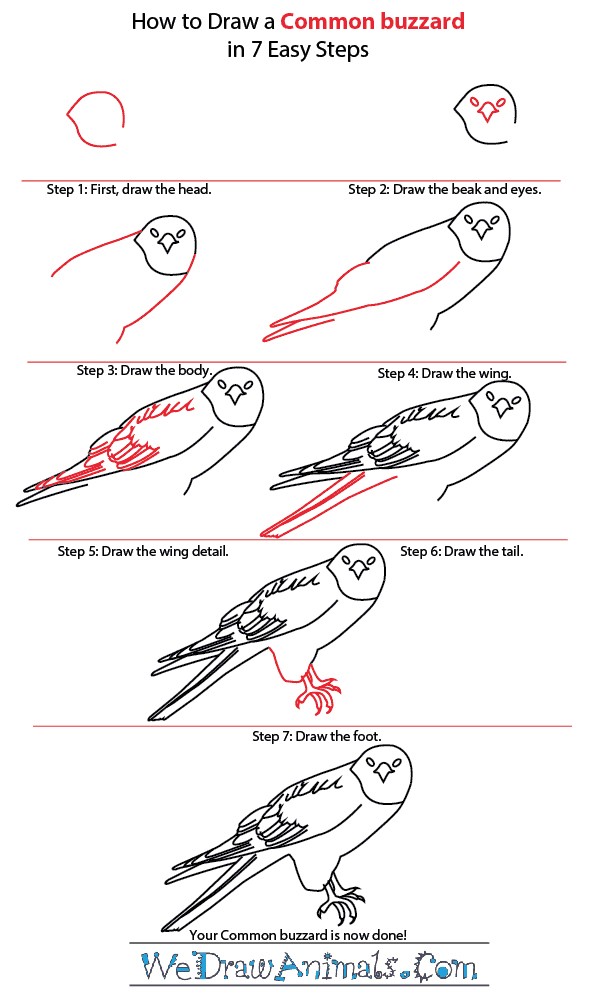In this quick tutorial you'll learn how to draw a Common Buzzard in 7 easy steps - great for kids and novice artists.
The images above represent how your finished drawing is going to look and the steps involved.
Below are the individual steps - you can click on each one for a High Resolution printable PDF version.
At the bottom you can read some interesting facts about the Common Buzzard.
Make sure you also check out any of the hundreds of drawing tutorials grouped by category.
How to Draw a Common Buzzard - Step-by-Step Tutorial
Step 1: To make the head, draw a circle that comes to a point on one side. Leave a small section open.
Step 2: Add two oval shaped eyes. The beak is shaped like a bell on top of a triangle.
Step 3: This is a large bird, so it has a big body. When you draw the lower half, start it at the space you left open at the head.
Step 4: From the top middle of the body, draw a curved line that comes to a point for the wing. Bring it up to the back.
Step 5: Draw in some feathers to make the wing look more realistic.
Step 6: Make two long, skinny rectangles to create the tail.
Step 7: The buzzard's feet are strong and dangerous. Make a U shape to connect the foot to the body. The toes are crescent shaped. Add claws to the end of each toe. Your common buzzard is now done! If you'd like to color your picture, this bird is usually shades of brown and white.
Interesting Facts about the COMMON BUZZARD
The Common Buzzard is a member of the bird family and the scientific term for them is Buteo buteo. There are two variations of this species, the Steppe Buzzard and Forest Buzzard. In Britain they can be white or black, but usually a variety of brown colorations in other parts of Europe. These are a medium size raptor, a broad wing species that migrates.
Did you know?
- They can be over 2 feet in length.
- Their first documentation was in 1758.
- There is a wingspan of more than 4 feet.
- This bird may fly in groups of 20 individuals.
- The species may weigh more than 3 pounds.
- There is usually a 100 foot space between them.
This species is very territorial, and will fight others if they do not stay in their designated area. However, aggressive displays will usually ward off the intruder. They breed on the edges of forests but hunt on open land. Each pair of this bird will mate for the rest of their life. Mating rituals include an aerial display by the male. They mostly eat mammals, but also reptiles, insects, other birds, and animals that have already been dead.








